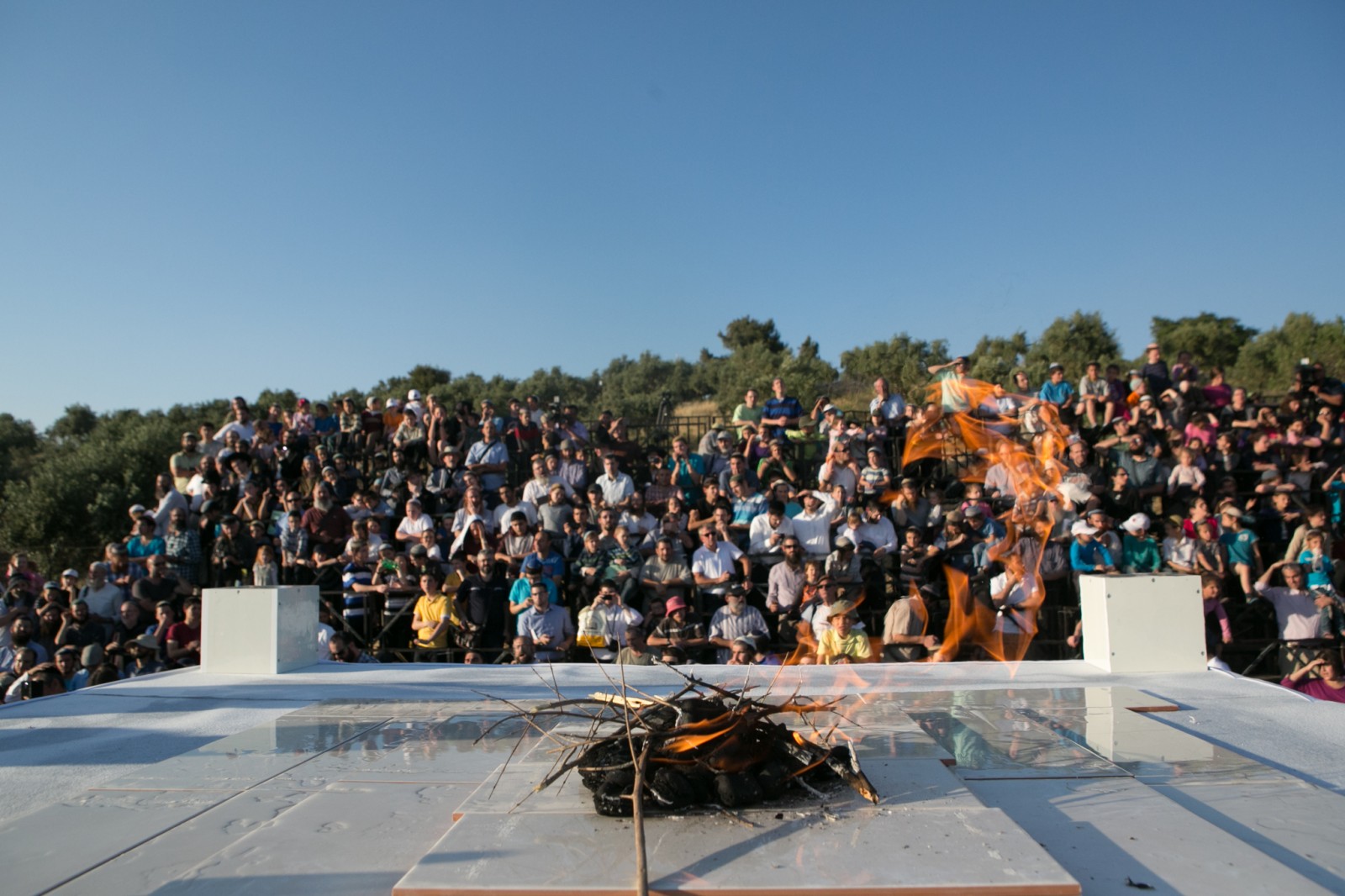Controversial ‘Practice’ Passover Sacrifice Performed on Mount of Olives
Jerusalem (TPS) – Jewish priests in ceremonial white tunics sounded trumpets and ritually slaughtered a lamb in a practice-run of the Passover sacrifice performed on Monday on Jerusalem’s Mount of Olives, located directly east of the Temple Mount. The rare ceremony was attended by leading religious officials, including Chief Rabbi of Jerusalem Aryeh Stern and Chief Rabbi of Safed Shmuel Eliyahu.
“It’s practice so that we’ll be ready when we can finally bring the sacrifice, which we haven’t been able to do in 2,000 years,” said Elishama Sandman, one of the organizers of the event, to Tazpit Press Service (TPS).

Spectators watch the reenactment of the Passover offering, in front of the sacrifical alter used in the ceremony.
The unusual ritual reenactment comes as tensions flare surrounding the Temple Mount, which is venerated by Jews as the site of the ancient Temple and by Muslims as the Al-Aqsa Mosque. Palestinians object to visits and prayer by Jews on the holy site, with many claiming that Israel seeks to destroy the Mosque and rebuild the Temple in its place.
“We hope and pray—and we also act—that we will be able to offer the sacrifice already this year,” Sandman told TPS. The Passover sacrifice, like all other Jewish sacrificial rites, may only be performed on the Temple Mount inside a rebuilt Jewish Temple, which many Jews believe will occur with the coming of the Messiah.
Monday’s reenactment of the Paschal lamb offering was performed in accordance with many of ritual’s necessary elements, all of which have been obsolete for nearly two millennia. The Kohanim (“priests,” who trace their lineage to the biblical high-priest Aaron) donned pure white clothing, specially made Temple trumpets were sounded, and there was even a solid-gold replica of the Temple’s Menorah present. The lamb was slaughtered and roasted whole, following the biblical precept, after which all present were invited to taste.
“You can learn in a lecture or a Yeshiva, but the best way to learn is through life and through practice,” argued Sandman. “It is the truest form of preparation for the real thing.”
Even as the attendees reveled in the biblical sights and smells, the Temple enthusiasts didn’t shy away from modernity. Sacrifices can be costly, so the organizers turned to the internet’s social platforms, raising nearly US $7,500 on the crowd-funding site Headstart.
Despite the attendance of Jerusalem’s chief rabbi, some religious leaders balked at the innovative ritual.
“I struggle with it,” said Rabbi Yuval Cherlow, a leading Religious-Zionist figure, painting the ceremony as premature. “To me it seems to be like jumping into a physical relationship between a husband and wife before love and a covenant exist.”
“Not only that, but in light of the words of the [Biblical] prophets, I am very concerned that we could return to the very same reality that itself led to the [Temple’s] destruction,” Cherlow added, warning of “Temple practices and sacrifices without a proper moral foundation and without elaborate systems of social justice.”
As for concerns of a backlash from Muslims over renewed Jewish initiatives regarding the Temple rituals, event organizers seemed unmoved.
“We’re not the violent side in this story. We never were,” Sandman told TPS. “We are not coming to attack anyone, God forbid, but to fulfil our duties as commanded in the Torah.”
